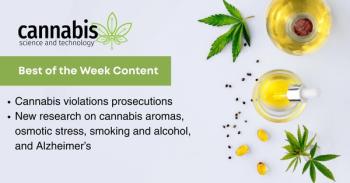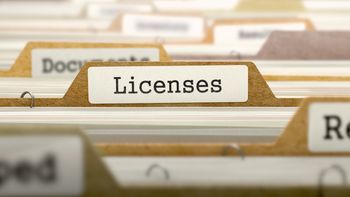
Cannabis Science and Technology
- Psychedelics: New Frontiers in Alternative Medicine
- Volume 5
- Issue s1
Anticipating Legalization: Making Psilocybin Accessible
Here we present an outline of the areas that might be critical in creating an infrastructure for building the right psilocybin production space.
As someone who remembers the psychedelic times of the 1960s, psychedelics such as psilocybin have come a long way from Dr. Timothy Leary’s mantra of “turn on, tune in, and drop out.” Today, psilocybin is being studied seriously for therapeutic applications at top medical schools, often with the support of the US government.
For example, the study of psilocybin to help advance mental wellness is being conducted at Johns Hopkins Medical School (depression, anxiety, smoking cessation); Yale University is doing a study on major depressive disorder; Harvard University is studying clinical depression; the University of Texas at Austin is studying depression and anxiety); and New York University is studying substance abuse and PTSD (1–5). This is by no means a comprehensive list. Important research on psilocybin is taking place now at many universities throughout the world.
This increase of research activity also coincides with an increasing shift towards the legalization or decriminalization of psilocybin both inside and outside of the US. Legalization typically considers four primary touch points: possession, sale, transport, and cultivation. These factors vary by locality and are changing so frequently that listing them here will render them out of date from the time this paper was written until the time it is published. That being said, legal psilocybin probably is coming soon to a market near you. Think of how quickly cannabis became legal once a few states passed legislation. With so many benefits of psilocybin being researched, one can assume that the legalization of psilocybin should happen even faster. It is logical to envision states and indeed countries where psilocybin sales and even psilocybin tourism becomes a significant part of the local economy.
Once psilocybin is accepted legally and medically for wellness programs, it’s then important to consider where it will be cultivated, how it will be processed, and in what forms it will be offered. Currently, most psilocybin is available on the black or grey markets. With a lack of oversight and regulatory guidance, consumers have little to no transparency into what they are using, its origin, and how it is processed. Proper dosage is also a major question mark in the space as consumers wonder how much they are taking and how much psilocybin they shouldtake. This dosage question is essential because given a positive or negative experience with psilocybin, consumers will want to know how much they have used.
Since psilocybin is in the early stages of legal commercialization on a production-level scale, there is a unique opportunity to establish the product ecosystem carefully and correctly. Fundamental to any attempt to create markets for a product is an understandingwhat consumers want. That isthe very definition of marketing. Given thisorientation, our team is focused on delivering six key benefits for our psilocybin offerings:
1. Convenience:The product should be convenient to use, convenient to buy, convenient to carry, and convenient to store.
2. Assured dosing: The product should be delivered in an assured dose including a microdose option. Currently, consumers have little idea as to what dose they require or what dose they are taking. Reliable dosing helps insure a consistent and positive experience.
3. Bioavailability: Consumers prefer a functional product and a faster onset time via improved bioavailability, which makes the product more functional and far more appealing.
4. Safety: Consumers want to know that what they are ingesting is safe. That’s why comprehensive, independent third-party laboratory testing for purity and potency on every batch is important for widespread adoption.
5. Palatability: The product should taste and smell good. Since mushrooms typically do not have great flavor or aroma, a better tasting product with a better aroma will improve the customer experience markedly and will deliver more sales.
6. Affordability: Making the product affordable extends the market to a larger addressable and accessible audience. Quite simply, that means more consumer trial and adoption plus greater sales. Affordability will make it easier for people to integrate psilocybin into their daily lives. This means frequency of usage, an objective that any repeat purchase product is seeking.
In Oregon, we are developing a spore-to-sale model for psilocybin, mindful of our goals of providing our six core benefits. Here is an outline of the areas we believe are critical in creating an infrastructure for building the space right. Our intent is to develop a lightweight, non-capital-intensive, portable model that is replicable globally as psilocybin becomes legal from state to state and from country to country.
Legal, Regulatory, and Compliance
It is essential to create a psilocybin product within the legal and regulatory environment of the states and countries in which we plan to operate. Laws and regulations do vary by jurisdiction, so it is essential to find legal experts in that jurisdiction. Fortunately, there are individual lawyers and law firms well-versed in psychedelics law that can help. Some attorneys who operate within this specialty do cover multiple jurisdictions. Others will only cover one jurisdiction. Our plan is to interview extensively and then hire exceptional lawyers before proceeding to build in any place we expect to operate.
Genetics
The right genetics will be essential to create unique, high-quality psilocybin offerings. We have access to a library of psilocybe cubensis sub-species curated from unique regions throughout the world. Most of the strains are 7th generation with low heterozygosity (or genetic deviation). These genetics have been stored carefully using swab prints, slants, and petri dishes. This premium library contains many high yielding strains that have been isolated for strength, resistance to contamination, and psilocybin or psilocin potency. Many of our genetics also maintain fast colonization rates over multiple flushes.
Culture Maintenance Set-Up and Lifecycle Management
Setting up a functional laboratory environment that controls plating and cultivation is a challenging task. The laboratory set-up must consider state regulated compliance, building codes, and many approvals, most likely from multiple government agencies. Once these hurdles have been cleared, setting up a proper laboratory environment requires the following:
Lifestyle Architecture
This must involve well planned procedures for spore transfers to agar plates for isolations, as well as mycelium to live culture growth transfers. There must be long-term storage plans and capabilities to maintain proper genetic health. In addition, appropriate infrastructure must be designed and built to house, maintain, and ensure non-contamination in near zero temperatures. Specialized cryogenic expertise is a necessity. Humidity must be controlled as well and processing systems must have minimal touch time to avoid unwanted exposure risks.
Isolation Procedures
Strict isolation procedures are critical to a high quality and consistent result. They include:
- Agar core to agar plate
- Agar core sample to live culture
- Spore printing to glass, fill, and swab
- Tissue sampling to live culture and cryogenic storage
Sterilization and Pasteurization Procedures
One cannot ignore the importance of sterilization and pasteurization. These procedures are vital:
- Live culture isolation
- Spawn media
- Choosing the correct substrate media prior to pasteurization
- The proper selection of tools and equipment is essential to complete these tasks
Inoculation Procedures
The second phase of inoculation procedures includes work in:
- Live culture to spawn media
- Spawn media to spawn media (grain to grain)
- Spawn media to substrate
Fruiting Chambers
Next is the selection and build-out of the fruiting chambers. This includes the design and the preparation of the vessels as well as the application of proper sterilization procedures. Once the chamber is in place, additional procedures must be formalized. This includes:
- Colonization protocols
- Environmental controls
- Air exchange
- Humidly control
Spawn Media and Substrate Media Preparation
Critical spawn media procedures include:
- Soak and rinse
- Pre-sterilization
- Pasteurization and sterilization
Substrate media procedures include:
- Creating a media ratio with specific considerations towards sub species preferences
- Media blending and safe handling protocols
Harvesting, Drying, and Storage
Now that the psilocybin has been grown, it’s time to harvest in equally controlled conditions.
This requires cleaning, handling, and harvesting techniques built to the strictest standards. Of course, drying and storage is important too as
we consider:
- Proper handling to help eliminate contamination
- Humidity-controlled drying
- Freeze-drying for improved efficacy of the finished fungi
- Alkaloid preservation techniques
- Techniques that enhance long-term storage
Extraction
For psilocybin, we favor full plant extraction, which more closely resembles grinding over traditional extraction techniques such as CO2 extraction. This process supports the preservation of active constituents that captures a fuller experience from fungi biology.
Formatting into Powder and Tablets
Our company has developed a patent-pending process where we can turn fungi-derived active ingredients into a good tasting, water-soluble tablet, sublingual tablet, or single serving powder dose. The effervescent tablets and powder forms mix quickly and evenly in any hot or cold liquid. In addition, we recently developed a sublingual tablet form that dissolves discretely under the tongue without having to drink any liquid. This tablet is highly bioavailable and comes in a pleasant mango or mint taste. Both the tablet and powder forms provide a more convenient, better tasting way of using psilocybin. These forms also feature accurate dosing and a faster onset time due to enhanced bioavailability.
Analytical and Regulatory Testing
Similar to cannabis testing, potency levels and contamination levels play an important part in psilocybin testing. While few standard psilocybin testing methods exist in the US, we want to be at the forefront of delivering consistent protocols. This requires a prescriptive approach to testing protocols, equipment, chemical concentrations, and much more. As analytical and research laboratories begin entering the space in great numbers, it’s also important to ensure accuracy and data integrity. Importantly, there must be agreed upon and detailed methods used universally across the space. This model is not unique as it has been used in other industries that have been successful in delivering safe, contamination-free, and high-quality products people consume with confidence.
As the psilocybin landscape matures, regulatory laboratories will be required to hone and perfect DNA and genetic testing protocols. For example, Oregon is requiring the use of Psilocibe cubensis. This requires the proper extraction of actives without denaturing or inhibiting quantification of psychoactive compounds.
While laboratories will be focused on regulatory standards, it is clear that more research is required. This research may come from medicinal mushroom companies in the nutraceutical and supplement space who are seeking similar testing capabilities as well as new markets. This will add to the support and sophistication of testing for fungi, in both psychedelic and non-psychedelic varieties.
Research
Today’s regulatory models address the value stream and production of psilocybin. Currently, much of the psilocybin research is being conducted in academic settings with little emphasis on commercialization. We believe research should address a fuller ecosystem. This can include genetics, strain management, processing improvements, post processing, and clinical applications. The involvement of the private industry in this research will take what is learned in all settings and apply this learning to help build superior products.
Mass Production
Our objective is to develop a production facility model that can work across borders and in low, medium, and high output settings. We want to model facilities that are neither space nor power intensive. Our additional goal is to utilize and provide effective, commonly available equipment that can be sourced anywhere in the world new, used, or on a leased-basis. This supports our goal of model portability and product affordability.
Marketing and Communications
Too often, marketing and communications is an afterthought in psychedelics. That’s a mistake we will not make. We are actively involved in creating product narratives that will resonate well in the earned, owned, and paid media spaces.
Conclusion
In summary, we believe we have outlined a sophisticated, efficacious, yet highly portable model that can be transferred across states and country borders. Given adherence to this model the goal of producing convenient, accurately dosed, highly bioavailable, safe, good tasting, and affordable psilocybin is achievable. We are excited about the prospect of building this valuable and important market with high standards, sound thinking, and care.
References
https://news.yale.edu/2021/07/05/psychedelic-spurs-growth-neural-connections-lost-depression .https://www.hopkinsmedicine.org/psychiatry/research/psychedelics-research.html .https://news.harvard.edu/gazette/story/2021/06/harvard-medical-school-professor-discusses-future-of-psychedelics/ .https://dellmed.utexas.edu/news/dell-med-launches-center-to-study-psychedelics-for-treatment-of-depression-anxiety-ptsd .https://med.nyu.edu/departments-institutes/population-health/divisions-sections-centers/medical-ethics/education/high-school-bioethics-project/learning-scenarios/ptsd-treatment-psychedelics .
About the Author
Dean Harris is the CEO of TabBrands. Direct correspondence to:
Articles in this issue
over 3 years ago
May/June 2022 Digital Editionover 3 years ago
The Path to Legalized, Accessible Psilocybin Therapyover 3 years ago
Psilocybin Therapy for PTSD and DepressionNewsletter
Unlock the latest breakthroughs in cannabis science—subscribe now to get expert insights, research, and industry updates delivered to your inbox.




